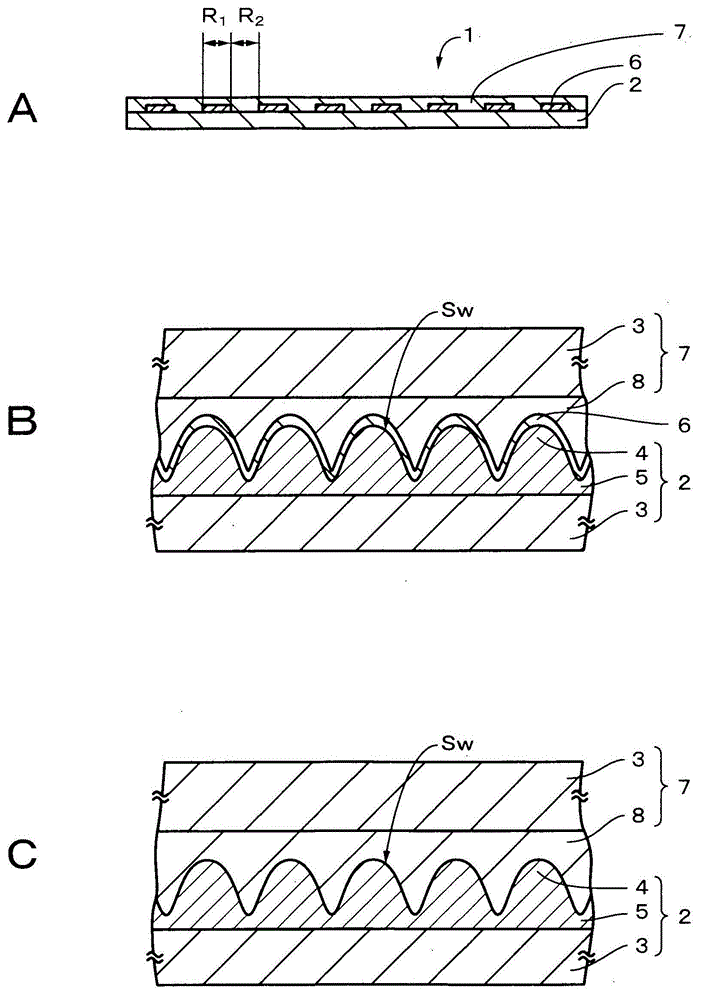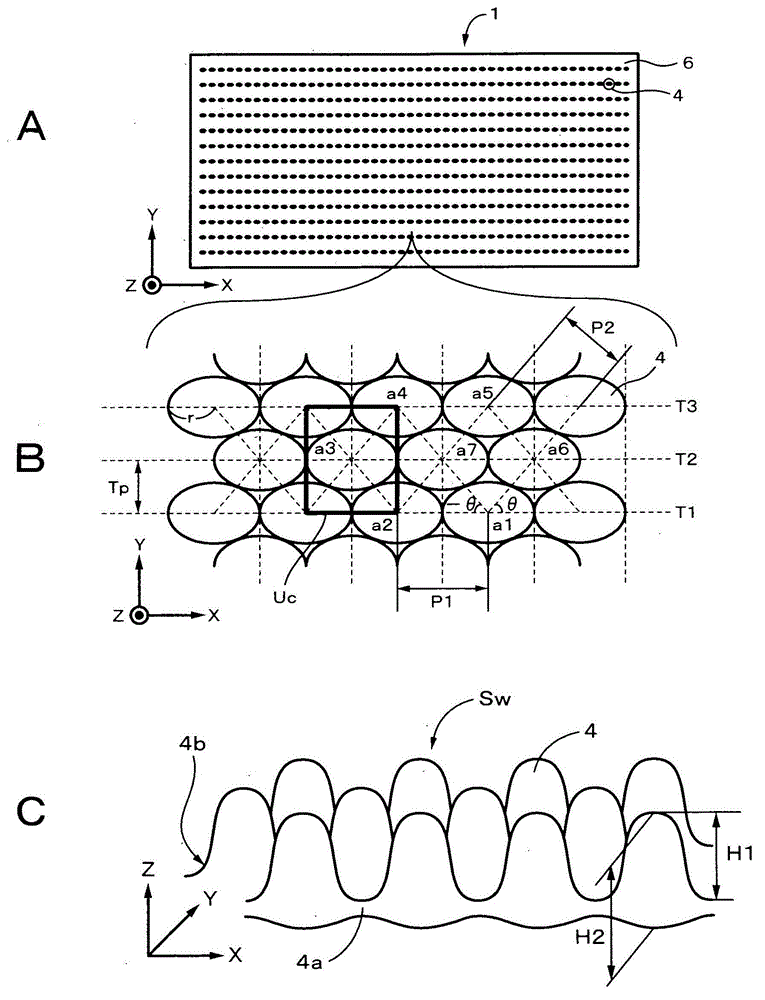Transparent conductive element, input device, and display device
A technology of transparent conduction and transparent conduction layer, which is applied to optical elements, conduction layers on insulating carriers, input/output process of data processing, etc., can solve problems such as troublesome quality of display devices and input devices, and achieve small wavelength dependence Effect
- Summary
- Abstract
- Description
- Claims
- Application Information
AI Technical Summary
Problems solved by technology
Method used
Image
Examples
no. 1 approach
[0094] 1. First embodiment (an example in which the structure is configured as a transparent conductive element in a hexagonal lattice shape)
[0095] 2. Second embodiment (an example in which the structure is arranged as a transparent conductive element in a tetragonal lattice shape)
no. 3 approach
[0096] 3. The third embodiment (an example of a transparent conductive element in which the structure is randomly arranged)
[0097] 4. Fourth Embodiment (an example of a transparent conductive element in which a transparent conductive layer is continuously formed on the entire wave surface)
no. 5 approach
[0098] 5. Fifth Embodiment (First Application Example of Transparent Conductive Element Applied to Information Input Device)
PUM
 Login to View More
Login to View More Abstract
Description
Claims
Application Information
 Login to View More
Login to View More - R&D
- Intellectual Property
- Life Sciences
- Materials
- Tech Scout
- Unparalleled Data Quality
- Higher Quality Content
- 60% Fewer Hallucinations
Browse by: Latest US Patents, China's latest patents, Technical Efficacy Thesaurus, Application Domain, Technology Topic, Popular Technical Reports.
© 2025 PatSnap. All rights reserved.Legal|Privacy policy|Modern Slavery Act Transparency Statement|Sitemap|About US| Contact US: help@patsnap.com



